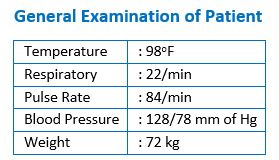Role of Panchakarma in Male Infertility w.s.r to High Altitude Induced Asthenozoospermia: A Case Report
DOI:
https://doi.org/10.21760/jaims.8.5.42Keywords:
Infertility, Samshodhan Karma, Vata Pitta Dushti, High Altitude, HypoxiaAbstract
Background of the Study: Infertility is a diseased condition of the reproductive system which can be defined as failure to achieve a clinical pregnancy after 12 months or more of regular unprotected intercourse. It is a major health issue affecting 8%-12% of couples worldwide. Male factor contributes to 20-30%, in India the contribution rate is 23%. Asthenozoospermia is a common cause of male infertility defined as reduced sperm motility, lower than 40%. Present study is looking at the impact of chronic exposure of high altitude (environmental hypoxia) on male infertility. Hypoxia acts directly on testicular seminiferous tubules resulting in impaired quantity and quality of sperm cells. Ayurveda explains male oriented infertility under the wide classification of Ashtshukradosha and asthenozoospermia which can be correlated with Ksheena Shukra. In case of Ksheenshukrta there is predominance of vitiated Vata and Pitta. Ayurvedic literature clearly mentioned Virechan Karma in Ksheena Shukra. Aim & Objectives: The main aim of this study was to evaluate the effect of high-altitude exposure on seminal parameters along with its successful management with Virechana Karma. Result: The current case study of a 29 years old male visiting the OPD section with 20% active sperm motility treated with Virechana Karma after Snehana and Swedana which resulted in the positive effect and the female partner conceived the very next month after Virechana Karma. Conclusion: The case study established the positive impact of Virechan karma in male infertility due to asthenozoospermia.
Downloads
References
Sadock BJ. Kaplan & Sadock's synopsis of psychiatry. Behavioral science/clinical psychiatry. 2003.
Gat Y, Gornish M, Navon U, Chakraborty J, Bachar GN, Ben-Shlomo I. Right varicocele and hypoxia, crucial factors in male infertility: fluid mechanics analysis of the impaired testicular drainage system. Reproductive biomedicine online. 2006 Jan 1;13(4):510-5.
Reyes JG, Farias JG, Henríquez-Olavarrieta S, Madrid E, Parraga M, Zepeda AB, Moreno RD. The hypoxic testicle: physiology and pathophysiology. Oxidative Medicine and Cellular Longevity. 2012 Sep 27;2012.
Bomhard EM, Gelbke HP. Hypoxaemia affects male reproduction: a case study of how to differentiate between primary and secondary hypoxic testicular toxicity due to chemical exposure. Archives of toxicology. 2013 Jul;87(7):1201-18.
Zepeda AB, Figueroa CA, Calaf GM, Farias JG. Male reproductive system and antioxidants in oxidative stress induced by hypobaric hypoxia. Andrologia. 2014 Feb;46(1):1-8.
Blokhina O, Virolainen E, Fagerstedt KV. Antioxidants, oxidative damage and oxygen deprivation stress: a review. Annals of botany. 2003 Jan 2;91(2):179-94.
Li Z, Wang S, Gong C, Hu Y, Liu J, Wang W, et al. Effects of environmental and pathological hypoxia on male fertility. Front Cell Dev Biol [Internet]. 2021;9:725933. Available from: http://dx.doi.org/10.3389/fcell.2021.725933.
Pdt. Kashinath Shashtri and Gorakh Nath Chaturvedi Charaka Samhita Vol. II (Chikitsa Sthana) chapter 2-1, verse 16, Varanasi:Chaukhambha Vidyotani Hindi Vyakhya ;2015. p.68.
Sushrut Samhita, with Nibandhasangraha of Dalhanacharya and Nyaychandrika Panjika of Gayadasacharya edited by Vaidya Yadavji Trikamji Acharya, shareersthana, chapter 2, shloka 3, Chaukhamba Surbharti Prakashan.
Kashinath Shashtri and Gorakh Nath Chaturvedi Charaka Samhita Vol. II (Chikitsa Sthana) chapter 30, verse 196, Varanasi:Chaukhambha Vidyotani Hindi Vyakhya ;2015. p.867.















